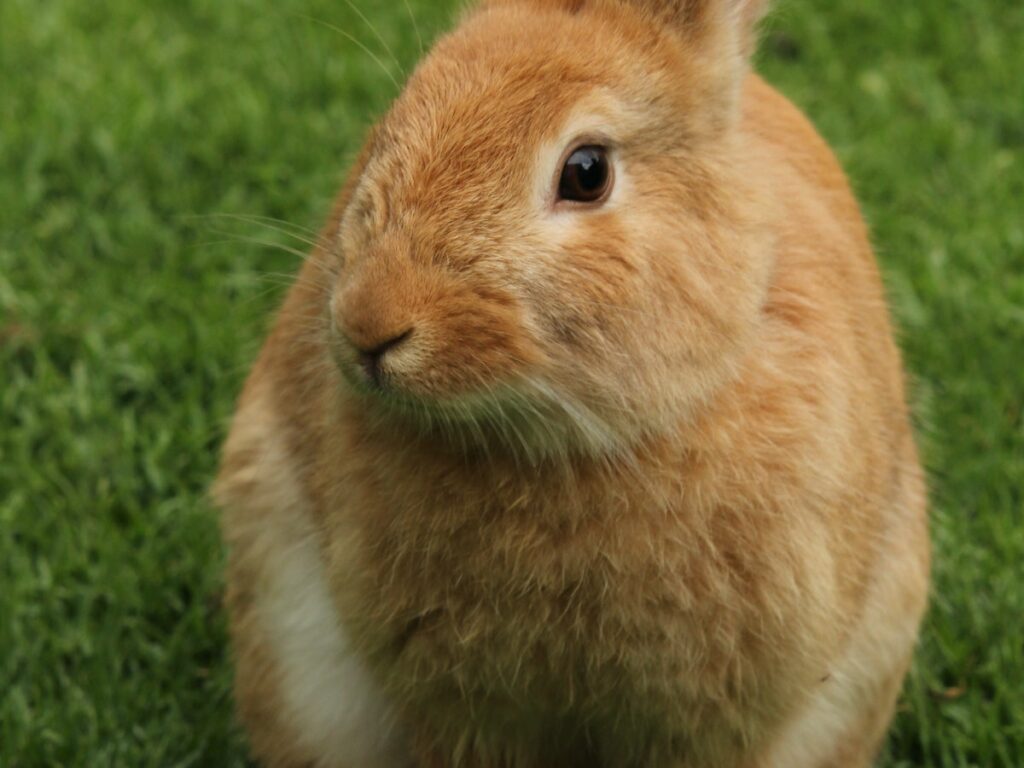Pet Rabbits – What to Expect During Moulting Rabbits
If you’re like most people, the word ‘moulting rabbits’ probably doesn’t conjure up particularly positive images. After all, moulting is what animals do when they lose their hair or feathers – not exactly a pretty sight.
But moulting isn’t just for animals – humans do it too! In fact, we moult all the time, only our moults are a lot less noticeable (unless you’re unlucky enough to have a bad case of dandruff).
So why am I telling you all this? Because today I’m going to be talking about moulting rabbits – and trust me, this is one moult you won’t want to miss!
What is Moulting and Why do Rabbits Moult?
The moulting process of rabbits is an important physiological event in their lives. It typically takes place once a year, with the length of the moult depending on the breed, environment and age of the rabbit. During this time, rabbits will shed their old coat of fur in order to make way for a new one. The process usually begins around February or March and can last anywhere from two weeks to ninety days.
Rabbits start by losing large patches of fur across their body, which slowly progresses until most of their fur has been shed – akin to a snake shedding its skin. At this point, the skin underneath the fur is much thinner than usual and may be more sensitive to the touch. The newly visible skin will be soft and fluffy because it contains shorter hairs compared to that of the previous coat. As more time passes, these short hairs will mingle together until they form a new coat with longer guard hairs as well as an undercoat and cashmere layers that give it a fuller appearance.
The Rabbit Moulting Process
The moulting process in rabbits is a natural process whereby they shed their old coat of fur and grow a new one in its place. This process takes place several times per year, generally around the spring and fall seasons, when days are shorter and temperatures drop.
Stage 1 – A Thinning Coat
The first stage of the moulting process is when the rabbit’s coat starts to thin out and become patchy. This can be caused by environmental stresses such as changes in temperature or humidity, or due to hormonal changes related to breeding season or pregnancy. During this period, the rabbit may appear dishevelled or unkempt with bald spots on its body. The rabbit may also groom itself more often than usual during this phase.
Stage 2 – Shedding of Dead Hair
Once the fur begins to thin out, the second phase of moulting commences where dead hair is shed from the animal’s body which can cause mats or clumps of fur on its coat. Rabbits will then start to ingest these clumps of hair as part of their digestion process and excrete them through their droppings. This helps remove excess fur from their bodies while providing additional nutrition in the form of protein and fat.
Stage 3 – New Growth
The third stage of moulting involves the growth of new hairs that gradually replace the lost ones over time. It is during this period that you will start to notice thicker patches of fur in areas where it was once sparse or patchy before. During this time, your rabbit should be brushed regularly with a soft brush to help remove any excess fur that hasn’t been swallowed yet for proper shedding control.
Stage 4 – Full New Coat
Finally, when all the old hair has been replaced by new ones, your rabbit’s coat will have a healthy shine again like before! Even though each individual rabbit’s moult cycle can vary according to age and breed type, most rabbits complete their entire moult within two months with full recovery taking up to four months depending on environmental conditions or other factors such as stress levels that could extend it further along.
How to Help your Rabbit Through the Moulting Process
As moulting can be an uncomfortable process for your rabbit, there are several things you can do to ease its discomfort and ensure proper moult management.
1. Provide plenty of fresh food and water – Eating a balanced diet is essential for moulting rabbits as the additional nutrition helps them replenish lost vitamins and minerals while moulting.
2. Create a soft resting spot – Providing your moulting rabbit with a comfortable resting place will help it relax while shedding out its old fur and growing new one.
3. Groom regularly – Brushing your moulting rabbit’s coat every few days helps remove loose hair, as well as
After the Moult
Your rabbit will be all grown up with a thicker, shinier coat of fur! By taking the time to provide your moulting rabbit with the proper nutrition, environment and care, you can help make moulting an easier and less stressful process for your pet.
Happy moulting!
FAQs about moulting rabbits
1. How often do rabbits moult?
Rabbits moult several times per year, generally around the spring and fall seasons, when days are shorter and temperatures drop.
2. What is the moulting process like for rabbits?
The moulting process in rabbits consists of four stages: thinning of the coat, shedding of dead hair, growth of new hairs and finally a full new coat.
3. What can I do to help my moulting rabbit?
Provide your moulting rabbit with plenty of fresh food and water, create a soft resting spot and groom regularly to help make moulting an easier process
If you have a pet rabbit, it’s important to have insurance in case of an emergency. That’s why we offer affordable rabbit insurance plans that will help cover the cost of veterinary care in the event your furry friend needs surgery or other treatment. Contact us today to learn more about our rabbit insurance plans and get a quote!
If you enjoyed this article about rabbits, and want to know more about rabbits, then come visit us at furr.co.uk
for more interesting content about rabbits.










